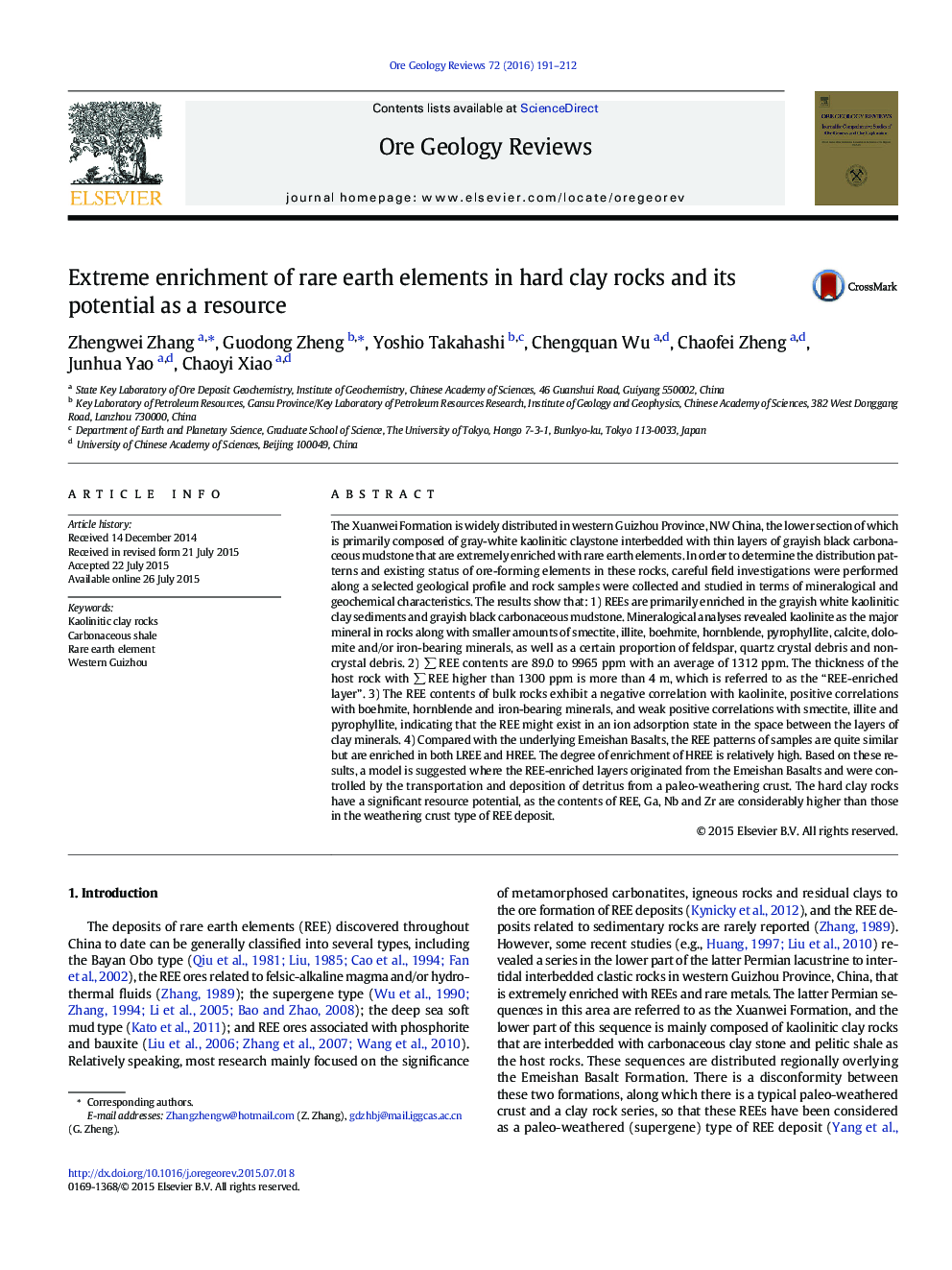| کد مقاله | کد نشریه | سال انتشار | مقاله انگلیسی | نسخه تمام متن |
|---|---|---|---|---|
| 6435730 | 1351852 | 2016 | 22 صفحه PDF | دانلود رایگان |
- The lower part of Xunwei Formation is extremely rich in rare earth and rare dispersion elements.
- REEs are mainly enriched in the kaolinite clayrocks and carbonaceous mudstone.
- The layer with â REE > 1300 ppm is > 4 m thick and becomes “REE enriched layer”.
- The correlation between REE contents and mineralogy indicates REE as ion adsorption state mainly in clay minerals.
The Xuanwei Formation is widely distributed in western Guizhou Province, NW China, the lower section of which is primarily composed of gray-white kaolinitic claystone interbedded with thin layers of grayish black carbonaceous mudstone that are extremely enriched with rare earth elements. In order to determine the distribution patterns and existing status of ore-forming elements in these rocks, careful field investigations were performed along a selected geological profile and rock samples were collected and studied in terms of mineralogical and geochemical characteristics. The results show that: 1) REEs are primarily enriched in the grayish white kaolinitic clay sediments and grayish black carbonaceous mudstone. Mineralogical analyses revealed kaolinite as the major mineral in rocks along with smaller amounts of smectite, illite, boehmite, hornblende, pyrophyllite, calcite, dolomite and/or iron-bearing minerals, as well as a certain proportion of feldspar, quartz crystal debris and non-crystal debris. 2) â REE contents are 89.0 to 9965 ppm with an average of 1312 ppm. The thickness of the host rock with â REE higher than 1300 ppm is more than 4 m, which is referred to as the “REE-enriched layer”. 3) The REE contents of bulk rocks exhibit a negative correlation with kaolinite, positive correlations with boehmite, hornblende and iron-bearing minerals, and weak positive correlations with smectite, illite and pyrophyllite, indicating that the REE might exist in an ion adsorption state in the space between the layers of clay minerals. 4) Compared with the underlying Emeishan Basalts, the REE patterns of samples are quite similar but are enriched in both LREE and HREE. The degree of enrichment of HREE is relatively high. Based on these results, a model is suggested where the REE-enriched layers originated from the Emeishan Basalts and were controlled by the transportation and deposition of detritus from a paleo-weathering crust. The hard clay rocks have a significant resource potential, as the contents of REE, Ga, Nb and Zr are considerably higher than those in the weathering crust type of REE deposit.
Journal: Ore Geology Reviews - Volume 72, Part 1, January 2016, Pages 191-212
